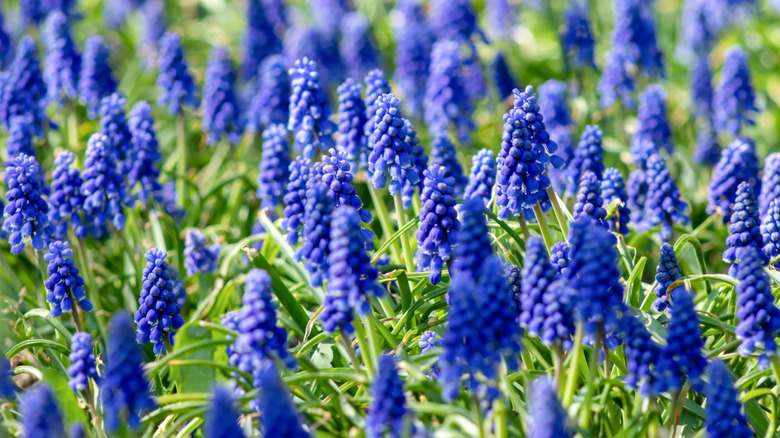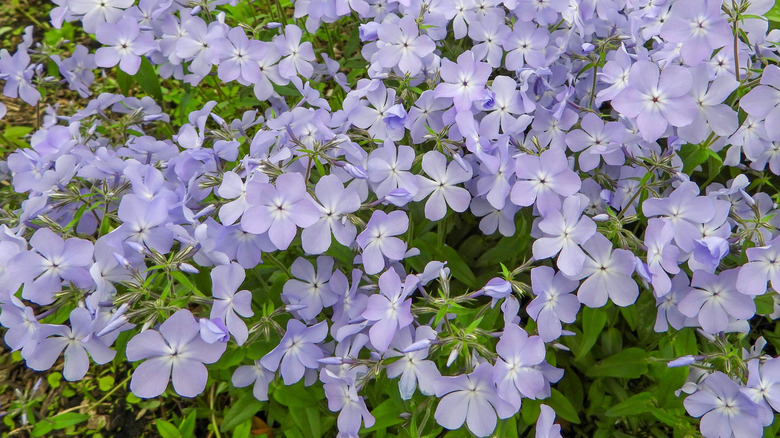Stop Planting Invasive Grape Hyacinth And Opt For A Native Alternative
Grape hyacinths (Muscari spp.) are spring-blooming bulbs with spikes of cobalt blue flowers. There are cultivars in a range of colors and bi-colors, including pale blue, white, and pink. The most popular variety, Muscari armeniacum, naturalizes readily in the garden and has a tendency to spread, while the common grape hyacinth (Muscari botryoides) is listed as invasive in some regions of the United States. If you'd like vibrant blooms in spring and don't want to have to deal with Muscari botryoides spreading too much in your garden, there are some other native flowering bulbs and plants to consider, including the woodland Phlox (Phlox divaricata).
Most spring-flowering bulbs tend to increase in size and volume each year, but some increase faster than others and are plants that need a certain amount of space between them. It's also important to determine if a bulb is considered invasive in your region. One blue-flowering spring bulb that can be planted in fall as a good alternative to muscari is the Virginia bluebell (Mertensia virginica). This native bluebell is hardy in Zones 3 to 8, and its growing needs are similar to Muscari's, since both like partial sun and prefer soil that is moist but well-drained (and slightly acidic). Another native muscari alternative is the desert bluebell (Phacelia campanularia) also known as California bluebell. Unlike bluebells that grow from bulbs, this one grows from seed and naturalizes by self-sowing in the garden. It is gaining popularity as a meadow and pollinator plant. It is an annual in Zones 2 to 10, and adapts to many kinds of soil.
More on native plant alternatives
There are a number of native plant alternatives to muscari that also flower in spring. One such plant is woodland phlox, which is hardy in USDA zones 3 to 8. It has glossy green leaves and fragrant star-shaped flowers in shades of lavender-blue or white. Although it is capable of self-sowing, tt is not considered an invasive or aggressive plant. It divides easily and blooms for weeks. There are several attractive cultivars available, including 'Blue Moon' and 'Chatahoochee.'
Creeping phlox (Phlox stolonifera) is native to the eastern Appalachian region. The flowers come in a wide range of shades, including pink, blue, and purple, and the spiky leaves stay green all season. Creeping phlox is a spring-bloomer that you can successfully grow, is hardy in zones 5 to 9, and they spread out in a low-growing mat, making them good for rock gardens, but do not spread beyond where they are planted. This is a good, colorful spring alternative to muscari and grows well on slopes. The bird's-foot violet (Viola pedata) is a lavender-blue perennial flower. It is native to Missouri and is commonly found in woodland areas, but can be cultivated in the right conditions. It prefers partial shade, and is hardy in Zones 4 to 8. This low-growing, clumping violet is well-suited to sloped areas and rock gardens.

